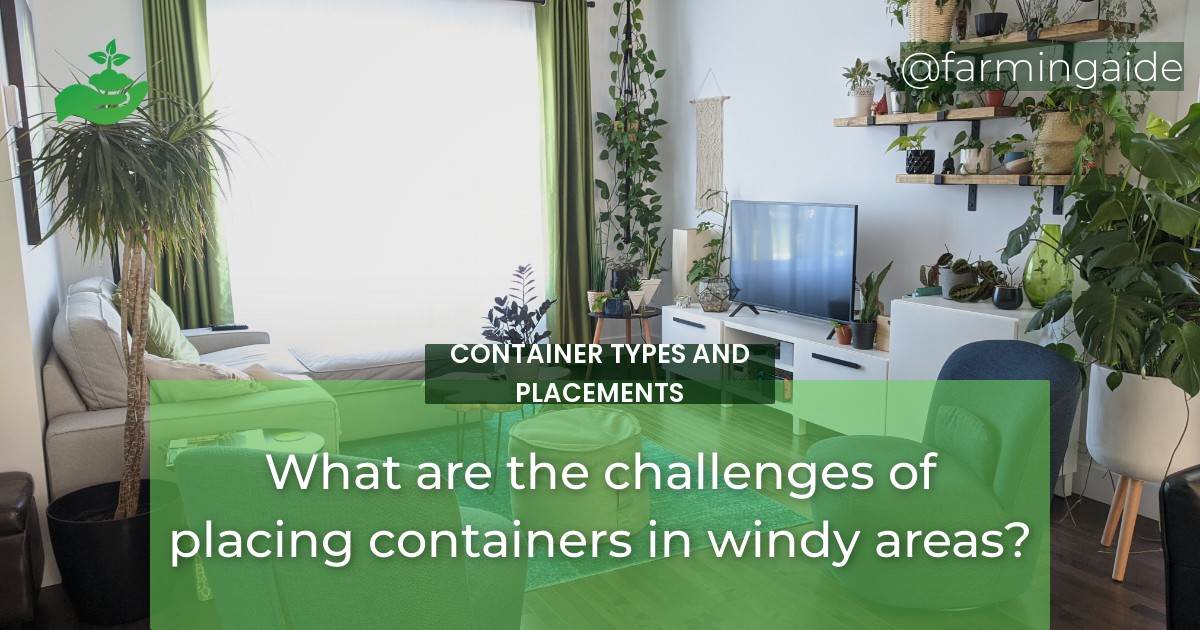Challenges and Solutions for Gardening in Windy Areas
Introduction
Gardening in windy areas can be a daunting task, yet it is essential to maintain a healthy garden. Containers are an ideal solution for gardeners facing such challenges, allowing them to grow a variety of plants in a controlled environment while minimizing the impact of the wind. In this article, we will explore the challenges and solutions for gardening in windy areas while focusing on container types and placements.
Container Types and Placements in Windy Areas
Container Types
Choosing the right container material is crucial when it comes to gardening in windy areas. Some of the container materials that gardeners may consider include:
- Terra cotta
- Concrete
- Metal
- Plastic
- Fiberglass
When it comes to size and weight considerations, heavier containers are ideal for windy areas. Large containers have a low center of gravity and are less likely to tip over. The ideal container size for windy areas is at least 12 inches in diameter and 12 inches deep. The features to look for in containers for windy areas include:
- Drainage holes
- Thick walls
- Sturdy rims
- Low center of gravity
Placement of Containers
Ideal locations for container placement in windy areas include:
- Protected areas like corners, fences, or walls
- Areas with natural windbreaks like trees or shrubs
Strategies for securing containers in windy areas include:
- Using stakes to anchor the container to the ground
- Securing the container to the fence or wall
- Grouping containers together to create a wind barrier
Tips for arranging containers in windy areas include:
- Arranging containers in a zig-zag pattern
- Positioning taller plants or trellises to block the wind
ALSO READ
Challenges of Placing Containers in Windy Areas
Plant Damage
Plants may suffer various types of damage in windy areas, including:
- Bent or broken stems
- Leaf scorch
- Desiccation
Prevention measures to avoid plant damage in containers include:
- Choosing wind-resistant plants
- Providing support to plants using stakes or trellises
- Using windbreaks like fences or walls
Soil Moisture and Nutrient Loss
Wind can cause soil moisture and nutrient loss in containers. The effects of wind on soil moisture and nutrients include:
- Drying out the soil
- Leaching of nutrients
Solutions for retaining moisture and nutrients in containers in windy areas include:
- Using moisture-retaining soil mixes
- Using mulch to retain moisture in the soil
- Applying slow-release fertilizer
Container Damage
Containers can suffer various types of damage in windy areas, including:
- Tip-over
- Cracking or breaking
- Scraping or denting
Tips for avoiding container damage in windy areas include:
- Choosing heavy, sturdy containers
- Securing containers to prevent them from tipping over
- Moving containers indoors during severe weather conditions
Conclusion
In conclusion, gardening in windy areas can be challenging, but with the right container types, placements, and preventive measures, it is possible to maintain a healthy garden. Choosing the right container material, size, and features, as well as proper placement and securing techniques, can help minimize the impact of the wind. Preventive measures, including choosing wind-resistant plants and providing support, can help prevent plant damage. Retaining soil moisture and nutrients and avoiding container damage are also essential. With these tips and strategies, gardeners can enjoy successful container gardening in windy areas.
RELATED ARTICLES:


